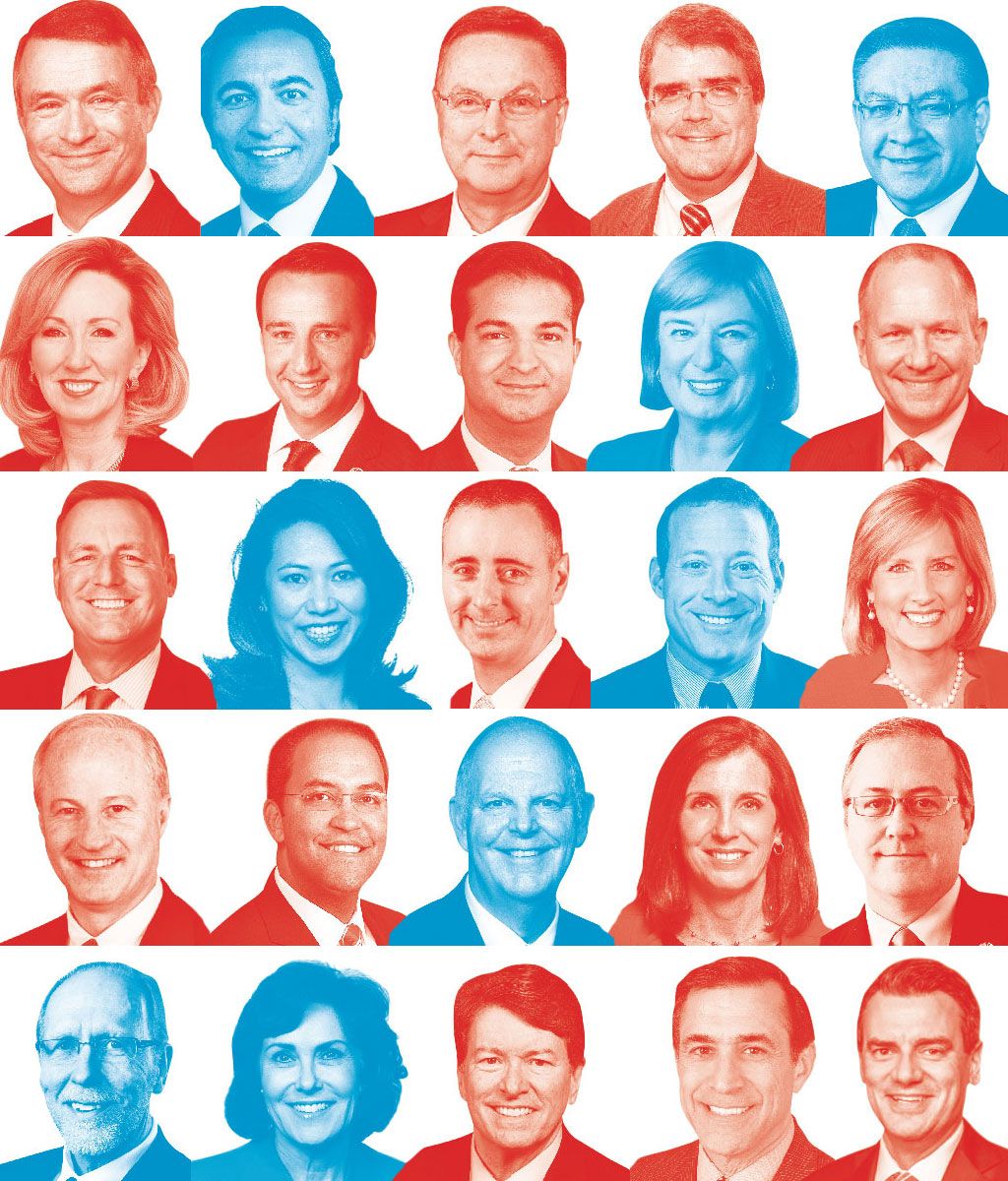Democrats emerged from the 2016 election confused, depressed, and virtually powerless. But it hasn’t taken long for them to regain their psychological mojo, aided as they have been by a combination of fear, anger, and Donald Trump’s inept first few months in office. “The resistance” started at the grassroots, taking visible form in protests at events held by Republican members of Congress in their home districts. After the GOP’s initial plan to repeal Obamacare was scrapped in March, the excitement spread to Washington, D.C. When Florida senator Bill Nelson, a mild-mannered centrist, announced he would filibuster the Supreme Court nomination of Neil Gorsuch, it was clear that Democrats had found a new spirit of unity and defiance.
The expected postelection “struggle for the soul” of the Democratic Party has now been replaced by optimism that the party might actually make a comeback in the next election. “There’s a storm that’s going to hit Republicans in 2018,” Representative Joaquin Castro, a Texas Democrat, told the New York Times. “The only question is if it is going to be Category 2 or Category 5.”
Thanks to a highly adverse Senate landscape in 2018 — Democrats must defend 25 seats, ten in states carried by Trump — the House offers the best opportunity to disrupt the GOP’s congressional stranglehold. Democrats will need 24 seats to win a majority there — 23 if Jon Ossoff wins his special election in Georgia later this month. In February, the Democratic Congressional Campaign Committee announced it was putting full-time organizers on the ground in 20 GOP districts as part of a midterm strategy it calls “March Into ’18.” The plan will attempt to channel the resistance into election campaigns — especially in the 23 House districts represented by Republicans that Trump lost to Clinton in 2016.
House Republicans will not give up their majority easily. The GOP continues to benefit from district maps aggressively gerrymandered after it picked up six governorships and 20 state legislative chambers in 2010. In 2012, the first cycle after the redistricting, the GOP won 234 House seats despite actually losing the national popular vote. In states like Florida, Michigan, Ohio, and Pennsylvania, GOP House delegations continue to be far larger than the party’s statewide popular vote would suggest. Aside from defending its own seats (the National Republican Congressional Committee’s “Patriot Program” is dumping money into the races of ten Republican incumbents it perceives as vulnerable), the GOP will go on the offensive against ten House Democrats who represent districts carried by Trump. Another presumed advantage for Republicans is in turnout patterns: Young and minority voters rarely participate proportionately in non-presidential elections; the whiter voters who have been trending bright red do.
But precisely because the Trump presidency is not normal, Democrats have reason to believe Republicans won’t benefit from their normal advantages. Trump’s brand of conservatism, if that’s what it is, has turned off many college-educated white voters, who tend to turn out in midterms. That may pose a particular problem for suburban moderate Republicans, like Peter Roskam, who represents suburbs west of Chicago, and Erik Paulsen, whose district on the outskirts of Minneapolis went for Clinton over Trump by nine points.
Democratic base enthusiasm is becoming a tangible asset. Grassroots volunteer activity is up sharply, as reflected in the 2,000 canvassers working for Ossoff in Georgia’s Sixth District special election. Democratic fund-raising expectations were initially low after the 2016 results, when some large donors openly questioned their return on investment and demanded an “autopsy” of what went wrong. But there has been an astonishing upsurge in small contributions to Democratic and progressive causes, much of it online. Initial candidate recruitment for tough races is also looking good, especially among women newly mobilized for public service by the global marches of January.
The Democrats also have one trend on their side: Midterm elections are mostly referenda on the occupant of the White House. Barring exceptional luck or exceptionally good conditions, almost all presidents lose popularity by the midterms. Of the last 20 midterms, the president’s party lost House seats in 18 (the exceptions were in 1998 and 2002, when presidents Clinton and George W. Bush, respectively, had unusually high job-approval ratings).
Trump’s approval ratings are famously low for a new president, and if they continue to lag, Republicans are going to lose House seats in 2018. In 2006, the same George W. Bush whose party did so well in 2002 lost 30 House seats and control of the chamber after he limped into the midterms with a job-approval rating of 37 percent, roughly where Trump is today.
The steady trend toward straight-ticket voting means it will be difficult for House Republicans to separate themselves from an unpopular president. But it’s too early to tell just how much the taint of Trump will spread or if it will be enough for Democrats to win a majority. The possibility that enthusiasm, unity, a more favorable mix of voters, and Trump’s misdeeds could produce a turnout revolution for Democrats will get early tests this year in Georgia’s special congressional election and the off-year state elections in New Jersey and Virginia.
The March Cook Political Report race ratings list only 23 highly competitive seats, and 12 of them are held by Republicans. Cook shows 25 districts as “likely Republican.” Democrats will need to flip a number of the long shots to get to their magic number. But there is certainly a recent precedent for that. At this point in 2009, Cook showed only 23 House seats held by Democrats as being vulnerable. By Election Day in 2010, that number had swollen to 101, and the GOP made a net gain of 63, with 52 Democratic incumbents losing. “Tsunami” elections like those Democrats are hoping for in 2018 often build slowly. But across the country anti-Trump activists believe they can see big waves gathering. We may hear their distant thunder very soon. –Ed Kilgore
30 Seats the Dems Covet …
AZ-2nd District (R)

Martha McSally
Age: 51
2016 Campaign Spending: Rep. $7,826,194 vs. Dem. $1,576,119
2016 Win Margin: 13.9% (43,933 votes out of 315,679 cast)
Presidential Outcome: Clinton, with 49.6% of the vote
McSally was the first female pilot to fly a combat mission, enforcing the post–Gulf War no-fly zone over Iraq in 1995. In 2004, she became the first woman to command an Air Force combat squadron, before retiring in 2010. She lost her first bid for the southeastern district in 2012, then won in 2014 by a scant 161 votes. Though she refused to endorse Trump in 2016, she has voted in line with the president 100 percent of the time. In Congress, she has taken a hawkish stance on defense and protected military bases in her district from budget cuts. No opposition candidate has emerged yet, though McSally has already faced town-hall criticism for her intention to vote to repeal Obamacare.
CA-10th District (R)

Jeff Denham
Age: 49
2016 Campaign Spending: Rep. $4,174,467 vs. Dem. $1,551,905
2016 Win Margin: 3.4% (8,201 votes out of 241,141 cast)
Presidential Outcome: Clinton, with 48.5% of the vote
Despite a fund-raising advantage over his 2016 opponent, beekeeper Michael Eggman, Denham won by just 8,201 votes, leaving Democrats hopeful they can flip the district. (Cook Political Report considers the seat competitive.) Denham rarely mentioned Trump on the trail, though he’s since consistently voted for Trump’s agenda. This Central Valley district is 43 percent Latino, so Denham, who was first elected in 2010, has always tacked left of his party on immigration; he’s now pushing a program under which immigrants could gain citizenship through military service. A spike in registration gave Dems a slight advantage in 2016. However, the nearly 20 percent of voters who registered as having “no party preference” skew conservative here.
CA-21st District (R)

David Valadao
Age: 39
2016 Campaign Spending: Rep. $2,806,588 vs. Dem. $648,918
2016 Win Margin: 13.5% (17,844 votes out of 132,408 cast)
Presidential Outcome: Clinton, with 55.2% of the vote
Like Denham, Valadao is a moderate Republican in a Latino-heavy Central Valley district. After working as a dairy farmer, he first won election to this newly created seat in 2012 (before redistricting, Democrats had represented the area for 20 years). The majority of voters remain registered Democrats, and 75 percent of the district is Latino. But Valadao is a confident campaigner and a Spanish-speaker who supports immigration reform. He also renounced Trump in June, earlier than most of his House colleagues, and was able to keep his 2016 race focused on the big local issue: water. Because of its demographics, the seat is a perennial target for Democrats. (The NRCC has listed Valadao as one of ten threatened incumbents on whom it’ll focus resources in 2018.) However, Valadao’s ties to the agricultural community could make this seat difficult to flip.
CA-25th District (R)

Steve Knight
Age: 50
2016 Campaign Spending: Rep. $1,674,968 vs. Dem. $1,672,102
2016 Win Margin: 6.2% (16,349 votes out of 261,161 cast)
Presidential Outcome: Clinton, with 50.3% of the vote
In 2016, knight was considered one of the state’s most vulnerable incumbents. His race against attorney Bryan Caforio drew national attention — Paul Ryan visited the district to raise money for Knight; Obama appeared in a TV ad for Caforio — and outside groups spent a total of $5.5 million on the race. One $326,250 dark-money expenditure sent scores of canvassers into the street for Knight. Challengers are already lining up for 2018: Democrat Katie Hill, the 29-year-old director of a local homelessness nonprofit, has declared her candidacy. Caforio has said he’s considering a rematch.
CA-39th District (R)
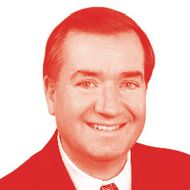
Ed Royce
Age: 65
2016 Campaign Spending: Rep. $3,640,434 vs. Dem. $76,014
2016 Win Margin: 14.4% (38,098 votes out of 263,456 cast)
Presidential Outcome: Clinton, with 51.5% of the vote
Royce, the chairman of the House Foreign Affairs Committee, has represented this suburban, conservative, heavily immigrant enclave since 1993. The district is diverse — 31 percent Asian and 35 percent Latino — and rich; it has an average household income of $101,243. But it’s also growing more liberal as Asian and Latino kids reach voting age: The Latino population has only grown by about four points since 2000, but Republican registration is down from 45 percent in 2000 to 36 percent today. Royce spent 48 times more than his opponent, a local city-council member, to win his 2016 reelection bid, making Democrats hopeful a well-funded Democrat could unseat him.
CA-48th District (R)
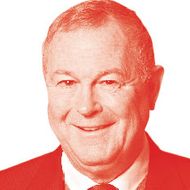
Dana Rohrabacher
Age: 69
2016 Campaign Spending: Rep. $646,004 vs. Dem. $102,133
2016 Win Margin: 16.6% (50,986 votes out of 306,416 cast)
Presidential Outcome: Clinton, with 47.9% of the vote
Like Royce, Rohrabacher is a more hard-line conservative who hasn’t faced much serious competition since he was first elected in 1988. Rohrabacher is known for his admiration of Putin (he once teared up while giving a speech about Russian children). Though the district was gerrymandered to elect Republicans, the GOP registration declined to 41 percent in 2016. And while Democratic registration lags at 30 percent, “no party preference” voters (24 percent here) lean liberal. Rohrabacher handily beat his 2016 opponent, a former USC professor, without spending much. Clinton won the district in 2016 and Obama in 2008, giving Democrats hope a real challenger might do well. Harley Rouda, a Laguna Beach business consultant, and Boyd Lachlan Roberts, a real-estate broker, have already announced their intentions to challenge Rohrabacher.
CA-49th District (R)
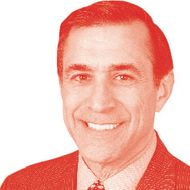
Darrell Issa
Age: 63
2016 Campaign Spending: Rep. $6,275,754 vs. Dem. $2,041,091
2016 Win Margin: 0.5% (1,621 votes out of 310,155 cast)
Presidential Outcome: Clinton, with 50.7% of the vote
The wealthiest member of Congress, Issa made his fortune in electronics before being elected in 2000. As chairman of the House Oversight Committee, he held theatrical investigations into Benghazi and the IRS’s alleged targeting of conservative organizations. He’s consistently voted in line with Trump’s agenda, even as he’s tried to distance himself from Trump, calling for an investigation into Russia’s election tampering. He’s also been tacking left on climate change, despite being a longtime climate-change denier. Clinton narrowly won the district in 2016, the first time Orange County has voted for a Democrat since 1936, in part due to the growing Latino population. Doug Applegate, a retired Marine colonel who barely lost to Issa in 2016, and Mike Levin, an environmental lawyer, have emerged as challengers. The Cook Political Report has declared the seat a toss-up.
CO-6th District (R)

Mike Coffman
Age: 62
2016 Campaign Spending: Rep. $3,521,511 vs. Dem. $3,107,614
2016 Win Margin: 8.3% (31,254 votes out of 376,417 cast)
Presidential Outcome: Clinton, with 50.2% of the vote
Former marine Mike Coffman joined Congress in 2009 after two decades in state politics. He largely votes along party lines, opposing reproductive rights, Obamacare, and the regulation of greenhouse gases. In 2012, he hopped briefly onto Trump’s birther bandwagon. In 2016, Coffman ran “stand up to Trump” messaging in his ads, but he’s consistently voted with Trump’s positions. In January, he left a town-hall meeting early after being booed by constituents. Republicans have held the seat since it was created in 1983, but Coffman could be vulnerable in this Denver-suburb district with more Democrats registered than Republicans.
FL-18th District (R)

Brian Mast
Age: 36
2016 Campaign Spending: Rep. $2,853,453 vs. Dem. $10,828,704
2016 Win Margin: 10.5% (39,570 votes out of 375,918 cast)
Presidential Outcome: Trump, with 53.3% of the vote
An army veteran who lost both legs in a roadside-bomb explosion in Afghanistan, Mast campaigned on reforming Veterans Affairs and cleaning up the waterways of his southeastern district. (He also offered some conservative red meat like defunding Planned Parenthood.) During the campaign, Mast declared he was “unanimously and wholeheartedly” supporting Trump, and so far in Congress, he has backed Trump’s travel ban and made a dramatic pitch to his Republican congressional colleagues to unite behind the AHCA. The DCCC has placed Mast on its list of targets for the next election, but no potential Democratic opponents have stepped forward.
Fl-26th District (R)

Carlos Curbelo
Age: 37
2016 Campaign Spending: Rep. $3,829,677 vs. Dem. $1,395,633
2016 Win Margin: 11.8% (33,054 votes out of 280,542 cast)
Presidential Outcome: Clinton, with 56.7% of the vote
Curbelo’s district went for Obama twice, voted for Clinton, and recently underwent court-ordered redistricting that tilted it in favor of Democrats. In 2016, he went into the race with $2 million stashed away from his unchallenged primary race, while his opponent, former Democratic representative Joe Garcia, an anemic fund-raiser, had a scandal-filled past and set himself back when he told a room of supporters that Clinton “is under no illusions that you want to have sex with her.” Throughout the campaign, Curbelo, a self-described centrist, criticized Trump and was able to tout his moderate record, which includes voting against defunding Planned Parenthood and for climate-change regulations. The district’s demographics combined with a scandal-free candidate could put the seat in play. Inside Politics has called the seat a toss-up.
IA-1st District (R)

Rod Blum
Age: 61
2016 Campaign Spending: Rep. $1,894,628 vs. Dem. $2,857,575
2016 Win Margin: 7.6% (29,500 votes out of 384,977 cast)
Presidential Outcome: Trump, with 48.7% of the vote
When Blum narrowly won his first congressional election in 2014, political pundits considered it a fluke. The multimillionaire software executive was a right-wing Republican with no political experience in a reliably blue district that Obama had carried twice by double-digit margins. When Blum arrived in Washington, he made no effort to strike a moderate tone. He joined the Freedom Caucus and cast his very first vote against reelecting John Boehner as Speaker. In 2016, he was considered one of the most vulnerable Republicans in the country. His Democratic opponent outspent him by nearly $1 million. Still, he won. But registered Democrats outnumber Republicans here. In the next election, it’ll become a lot clearer whether this heavily white working-class area was merely disillusioned with the status quo or whether it has swung drastically to the right.
IA-3rd District (R)

David Young
Age: 48
2016 Campaign Spending: Rep. $2,438,370 vs. Dem. $1,942,890
2016 Win Margin: 13.2% (53,596 votes out of 390,287 cast)
Presidential Outcome:
Trump, with 48.5% of the vote
A former GOP Senate aide now in his second term, Young tepidly endorsed Trump, but he stayed away from his rallies in Iowa and didn’t attend the Republican National Convention. He told constituents at a Des Moines town hall that his previous votes to repeal Obamacare were “symbolic in a lot of ways” and that he did not support the AHCA. In response, the Congressional Leadership Fund, a Paul Ryan–associated super-PAC that had spent $1.9 million on Young in 2016, withdrew its support. Two Democrats, retired businessman Mike Sherzan and attorney Anna Ryon, have already announced their intention to try to unseat Young.
IL-6th District (R)

Peter Roskam
Age: 55
2016 Campaign Spending: Rep. $3,331,980 vs. Dem. $98,179
2016 Win Margin: 18.4% (64,964 votes out of 352,146 cast)
Presidential Outcome: Clinton, with 50.2% of the vote
In 2016, Roskam won his sixth term in this reliably Republican district, which stretches across the northwestern Chicago suburbs. Roskam hasn’t even debated an opponent since 2008. But he is also the only Illinois Republican whose district Clinton won. He’s consistently voted in line with Trump’s positions, is for repealing the ACA, leaned yes on the AHCA, and has said he supports the “underlying theme” of Trump’s immigration order. Tying himself to Trump may hurt him in a district that hasseen a lot of activism postelection, and Roskum has a reputation for being inaccessible to constituents. He’s held only one town-hall meeting ever. Lately, he’s been followed around by protesters.
KS-3rd District (R)

Kevin Yoder
Age: 41
2016 Campaign Spending: Rep. $4,049,363 vs. Dem. $563,363
2016 Win Margin: 10.7% (36,722 votes out of 343,113 cast)
Presidential Outcome: Clinton, with 47.2% of the vote
Voder was just 34 when he won his House seat as part of the Republican wave of 2010. He’s since eased into the path of a steadily rising Establishment Republican. But in 2016, voters in Yoder’s district showed a notable lack of enthusiasm for both Trump and tax-slashing Kansas governor Sam Brownback, and Yoder worked to distance himself. Since the election, he has made an effort to score bipartisan bona fides, calling for robust federal spending on cancer and Alzheimer’s research and defending civil-rights icon John Lewis in his public spat with Trump. Yoder’s district swung among Bush, Obama, Romney, and Clinton in the past four elections, and the DCCC has already hired a full-time local organizer with the goal of ousting the congressman.
ME-2nd District (R)
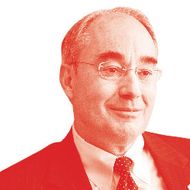
Bruce Poliquin
Age: 63
2016 Campaign Spending: Rep. $3,369,694 vs. Dem. $3,460,262
2016 Win Margin: 9.5% (33,797 votes out of 352,183 cast)
Presidential Outcome: Trump, with 51.4% of the vote
A Phillips Exeter and Harvard grad who made millions as a real-estate developer, Poliquin first won his seat in 2014, becoming the only Republican in two decades to represent Maine’s heavily rural, proudly blue-collar Second District. As a candidate, he had railed against Obamacare, but as a congressman, in 2015, he was one of only three Republicans to vote against its repeal. His first bill was co-sponsored by Democrat Keith Ellison, one of the most liberal members of Congress. In 2016, he did his best to steer clear of mentioning Trump’s name. House Democrats have put Poliquin’s seat on their list of targets, though so far no challengers have declared for the race. But it may not be Poliquin the Democrats find themselves running against at all. The second-term congressman has been mentioned as a possible 2018 candidate for governor.
MN-2nd District (R)

Jason Lewis
Age: 61
2016 Campaign Spending: Rep. $1,020,649 vs. Dem. $4,012,823
2016 Win Margin: 1.7% (6,655 votes out of 370,514 cast)
Presidential Outcome: Trump, with 46.5% of the vote
A talk-radio host, Lewis was famous for calling Hurricane Katrina victims “a bunch of whiners,” alleging that single women “vote on the issue of somebody else buying their diaphragm,” and likening progressive taxation to chattel slavery. When he entered the 2016 GOP primary race, he seemed a bad fit for Minnesota’s second district, which had twice voted for Obama. In the general election, first-time Democratic candidate Angie Craig painted the shock jock as a mini-Trump. Craig lost, but an independent candidate took nearly 8 percent of the vote, more than four times Lewis’s margin of victory, giving the DCCC hope the seat can still be flipped.
MN-3rd District (R)

Erik Paulsen
Age: 51
2016 Campaign Spending: Rep. $5,761,611 vs. Dem. $1,970,297
2016 Win Margin: 13.6% (53,834 votes out of 393,464 cast)
Presidential Outcome:
Clinton, with 50.8% of the vote
A six-term chamber of Commerce Republican, Paulsen represents a cluster of suburbs and exurbs to the west of Minneapolis that constitute the wealthiest, best-educated congressional district in the state, full of the moderate voters who might have happily backed Jeb Bush but found Trump toxic. The veteran congressman avoided discussing his party’s nominee, saying he’d cast a write-in ballot for Marco Rubio. The DCCC is once again vowing to target Paulsen — and his strong backing of the AHCA might yet be a liability — but the congressman’s sturdy showing in November and his successful history in the district give him a substantial advantage going into 2018.
NE-2nd District (R)

Don Bacon
Age: 53
2016 Campaign Spending: Rep. $1,576,183 vs. Dem. $2,515,416
2016 Win Margin: 1.2% (3,464 votes out of 288,308 cast)
Presidential Outcome: Trump, with 48.2% of the vote
Before 2008, Nebraska’s Second District, which includes Omaha and its suburbs, had been considered a Republican stronghold. Then Obama pulled off an upset — the first time Nebraskans gave an electoral vote to a Democrat since 1964. (Nebraska awards three of its five electoral votes to the winners of its congressional districts.) And in 2014, Republican turned Democrat Brad Ashford unseated the district’s longtime representative, defying national trends. Viewing that win as an aberration, in 2016 Nebraska Republicans threw their support behind retired U.S. Air Force brigadier general Don Bacon. When the Access Hollywood tape went public, Bacon said Pence should replace Trump atop the ticket. But in office, he has voted for the Trump agenda 100 percent of the time. The DCCC has placed Bacon on its initial list of 2018 targets.
NJ-7th District (R)

Leonard Lance
Age: 64
2016 Campaign Spending: Rep. $1,276,330 vs. Dem. $305,886
2016 Win Margin: 10.9% (37,662 votes out of 343,635 cast)
Presidential Outcome: Clinton, with 48.6% of the vote
Attorney and state politician Leonard Lance swerved right on social positions after his election to Congress in 2008, swapping out career-moderate stances to protect himself from tea-party candidates in the primaries. That might not be enough to hurt him; New Jersey’s Seventh has been represented by the GOP since 1981. But given Clinton’s win there and Lance’s taking the heat of growing anti-Trump resentment, the district — home to Trump National Golf Club, the president’s planned burial site — could be in play. In February, over 1,000 constituents packed a town hall to demand Lance hold the president accountable, jeering when he balked at a question about Russian influence on the election. He also voted to keep Trump’s tax returns secret. Peter Jacob, a young Indian-American social worker in a district with a 19 percent foreign-born population, has expressed interest in running.
NY-19th District (R)

John Faso
Age: 64
2016 Campaign Spending: Rep. $2,904,089 vs. Dem. $4,978,026
2016 Win Margin: 8.1% (24,947 votes out of 307,395 cast)
Presidential Outcome: Trump, with 50.8% of the vote
In the New York State Assembly, Faso was known as a “militant fiscal conservative.” Democrats had high hopes for his 2016 opponent, Fordham Law professor Zephyr Teachout — but Robert Mercer spent big opposing her. This term, Faso put his name on an amendment to the AHCA that would have shifted Medicaid costs from upstate counties to Albany — potentially creating health-care havoc. “They’ve declared war on New York,” responded Governor Cuomo. Three Democrats have filed paperwork so far to run against Faso in 2018, though none of them has political experience (which these days could play either way).
NY-22nd District (R)

Claudia Tenny
Age: 56
2016 Campaign Spending: Rep. $885,895 vs. Dem. $1,652,888 vs. Ind. $3,012,164
2016 Win Margin: 5.5% (15,187 votes out of 278,348 cast)
Presidential Outcome: Trump, with 54.8% of the vote
Tenney, a tea-party-affiliated first-term congresswoman, was named the most conservative legislator in the state by the New York Conservative Party when she was in the State Assembly. So far, she has voted with Trump 100 percent of the time, and strategists think that she will prove too conservative for NY-22, which has historically toggled between a moderate Democrat and a moderate Republican. Tim Grippen, the chair of the Broome County Democratic Committee, says he has been approached by four people interested in running, including “a college professor, a respected assemblyman, and a Navy veteran with a lot of experience in Washington.”
NY-24th District (R)
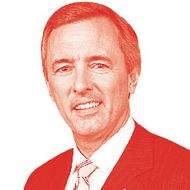
John Katko
Age: 54
2016 Campaign Spending: Rep. $2,384,152 vs. Dem. $1,478,639
2016 Win Margin: 21.1% (63,721 votes out of 301,801 cast)
Presidential Outcome: Clinton, with 48.9% of the vote
Katko spent 20 years as a federal prosecutor before winning this seat in 2014 — the fourth time since 2006 that the district had flipped. His opponent in 2016 was Colleen Deacon, a single mother from Syracuse who worked as a senior aide to Senator Kirsten Gillibrand and epitomized Gillibrand’s “Off the Sidelines” strategy of recruiting women to run for office. But Deacon struggled to gain name recognition and Katko worked hard to distance himself from the presidential candidate, playing up his party-line-crossing voting record (he would have been a no on the AHCA). Katko won easily, and while no Democrats have officially declared their interest in 2018 yet, Stephanie Miner, the current mayor of Syracuse (which she insists remain a sanctuary city), is seen as a strong possibility, with a war chest reportedly in the six figures.
PA-6th District (R)
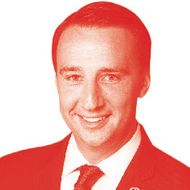
Ryan Costello
Age: 40
2016 Campaign Spending: Rep. $2,339,160 vs. Dem. $373,422
2016 Win Margin: 14.5% (52,469 votes out of 362,469 cast)
Presidential Outcome: Clinton, with 48.2% of the vote
The sixth district’s House seat hasn’t been held by a Democrat since 2002. During the 2016 campaign, Costello was a fickle Trump supporter, backing the candidate in May, but then declining to go to the Republican National Convention. Since Inauguration Day, Costello has painted himself as a centrist, condemning Trump’s proposed budget cuts to medical research and public education (his parents were public-school teachers). He also sits on the bipartisan House Climate Solutions Caucus. After initially supporting the AHCA in committee, Costello was met with protests outside of his West Chester office. (Pennsylvania activists have taken to protesting there every Friday.) The district went for Obama in 2008, and Clinton won it by a sliver. That has the DCCC optimistic enough to include it on its “March Into ’18” hit list.
PA-7th District (R)
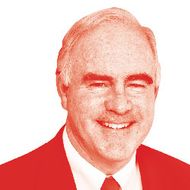
Patrick Meehan
Age: 61
2016 Campaign Spending: Rep. $2,155,483 vs. Dem. $198,954
2016 Win Margin: 18.9% (71,854 votes out of 379,502 cast)
Presidential Outcome: Clinton, with 49.3% of the vote
Meehan, now in his fourth term, is considered relatively moderate in a district that is notorious for its radically gerrymandered contours. The Washington Post described it as “one of the most geographically irregular districts in the nation.” Democrat Mary Ellen Balchunis, a political-science professor at La Salle University, has tried twice to unseat Meehan, without success or funding — Meehan outspent her this past cycle by more than ten to one. The DCCC, which is targeting the district, hopes that a well-financed candidate might be able to flip voters turned off by Trump, particularly in more-liberal Delaware County.
PA-8th District (R)

Brian Fitzpatrick
Age: 43
2016 Campaign Spending: Rep. $2,009,177 vs. Dem. $2,778,029
2016 Win Margin: 8.9% (33,708 votes out of 380,818 cast)
Presidential Outcome: Trump, with 48.2% of the vote
A former FBI agent who led the bureau’s enforcement of campaign finance, Fitzpatrick took over his brother Michael’s seat in 2016, after Michael stood by his pledge to retire after four terms. Fitzpatrick has held up his brother’s bipartisan record, with a planned vote to keep Obamacare and support of a promising, albeit vague, GOP-led bill to employ “American ingenuity” against climate change. Though the district contributed to Trump’s poll-defying win in Pennsylvania, Democrats expect it to remain competitively purple, in part because Obama barely lost there in 2012. Could an anti-Trump bump unseat the Fitzpatricks for the first time since the landslide 2010 midterms?
PA-16th District (R)
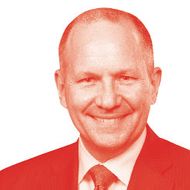
Llyod Smucker
Age: 53
2016 Campaign Spending: Rep. $1,453,232 vs. Dem. $1,147,203
2016 Win Margin: 10.8% (34,083 votes out of 313,773 cast)
Presidential Outcome: Trump, with 51% of the vote
incumbent Joe Pitts announced his retirement. Smucker was quick to voice disgust with Trump’s Access Hollywood comments, though he’s fallen in line since November, and when Trump first proposed the travel ban, he considered the executive order “entirely reasonable.” In March, 100 constituents marched in on an official Lancaster County breakfast to protest his refusal to hold a town meeting — four demonstrators even paid to get inside and disrupt the meal. Republicans have a historical advantage here, with a winning streak dating back to WWII. But a gerrymandering project in 2011 designed to bolster GOP support gave away key conservative votes in Lancaster County, and Obama took the 16th (which is now 17 percent Hispanic) in 2012.
TX-7th District (R)

John Culberson
Age: 60
2016 Campaign Spending: Rep. $1,193,411 vs. Dem. $62,159
2016 Win Margin: 12.3% (31,551 votes out of 255,533 cast)
Presidential Outcome: Clinton, with 48.5% of the vote
The Texas seventh is a longtime GOP bastion, reliably Republican since 1966, and Culberson, a tea-party conservative first elected in 2000, has pursued conservative causes such as defunding sanctuary cities and strongly supported delaying Obamacare funding in 2013. Even though Culberson held on by a wide margin in 2016, Democrats swept countywide seats within his affluent Houston district, which Culberson later told the Dallas Morning News was a “distressing trend.” This district saw one of the largest decreases in GOP presidential votes in the country (a double-digit drop from Romney to Trump). With an unpopular president and an increasingly diverse district, the DCCC is betting a strong Democratic contender might have a chance, which is why it’s added Culberson’s district to the “March Into ’18” target list.
TX-23rd District (R)
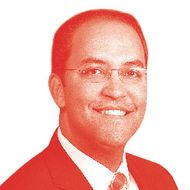
Will Hurd
Age: 39
2016 Campaign Spending: Rep. $4,109,804 vs. Dem. $2,181,645
2016 Win Margin: 1.3% (3,051 out of total 228,965 votes cast)
Presidential Outcome: Clinton, with 49.8% of the vote
Regarded as one of the only true swing opportunities in Texas, TX–23 flips parties in almost every election. Second-termer Hurd represents a sprawling district hugging the U.S.-Mexico border that voted Clinton. In his favor, Hurd, a former CIA cybersecurity expert, is a rising voice on defense matters. His district also has abysmal midterm turnout rates (30 percent in 2014), which typically benefits the incumbent. But with President Trump’s controversial immigration policies hitting close to home, that might not mean much; former representative Pete Gallego made a second run at reelection in 2016 and almost won.
TX-32nd District (R)
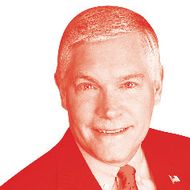
Pete Sessions
Age: 62
2016 Campaign Spending: Rep. $2,559,457 vs. Rep. $12,844 vs. Ind. $3,189
2016 Win Margin: 52.1% No Democratic challenger
Presidential Outcome: Clinton, with 48.5% of the vote
Sessions is a reliable incumbent who’s been in office since 1997. In fact, the Democrats didn’t even run a candidate in the 2016 race. He occupies a powerful position as chairman of the House Rules Committee and has a strong foothold; however, Clinton took his district in the 2016 election, and recent town halls have showcased discontent among constituents (“Vote him out!” went one overwhelming cheer). Clinton’s victory and a statewide shift toward blue politics mean that some see a pathway to victory for a compelling Democratic candidate. As part of their “March Into ’18” campaign, Democrats will have full-time organizers on the ground there for the first time.
VA-10th District (R)

Barbara Comstock
Age: 57
2016 Campaign Spending: Rep. $5,291,182 vs. Dem. $2,821,082
2016 Win Margin: 5.7% (23,079 votes out of 400,083 cast)
Presidential Outcome: Clinton, with 52.2% of the vote
A Georgetown-educated lawyer, Comstock made her reputation in the 1990s as a ruthlessly effective opposition researcher, helping to expose and manufacture Clinton scandals and pseudo-scandals from Travelgate to Lewinsky. In 2014, she won the seat vacated by her former boss, Frank Wolf, by a 16-point margin. But Comstock’s district has steadily grown more ethnically diverse, affluent, and liberal, and Trump’s candidacy posed a threat to her job security. Comstock announced that she would not vote for him. She convinced enough voters to split their tickets that she prevailed by a six-point margin (Clinton won by ten; Romney was the narrow victor in 2012). Democrats are already mounting a serious effort at unseating her. In response, the NRCC has made Comstock one of its ten highest-priority incumbents in 2018.
… And Nine They Need To Protect.
The most competitive House races with Democratic incumbents.
NH-1st District (D)

Carol Shea-Porter
Age: 64
Shea-Porter, who first ran in 2006 on an antiwar platform, and Republican rival Frank Guinta have traded the seat back and forth for the past four terms. The NRCC, in hopes that this volatile record will shake the congresswoman from the seat in 2018, named the First one of its 36 blue-collar districts to flip in 2018. Trump won the district, which has substantial numbers of Independent and Republican voters.
NV-3rd District (D)
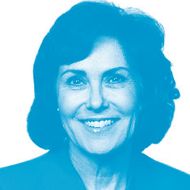
Jacky Rosen
Age: 59
Rosen ran a pro-immigration and “protect seniors” campaign to win the position vacated by Joe Heck, who lost his bid for Harry Reid’s old spot in the Senate. If the moderate Heck were to return from his failed Senate campaign to run in the Third, his name recognition and popularity — he won by 24.7 percent in 2014 — could negate the Democrat’s slight voter-registration lead in Nevada’s oldest, wealthiest district.
MN-8th District (D)
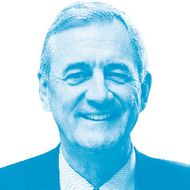
Rick Nolan
Age: 73
A “Watergate baby” congressman from 1975 to 1980, Nolan returned to the House in 2012. In the last two races he’s faced Stewart Mills, the scion of a Minnesota sporting-goods chain, winning by nearly 4,000 votes in 2014 and by just over 2,000 in 2016. Once solid blue, the district has been feeling the populist wave spurred by job losses among miners in the Iron Range. After two close races, Mills is mulling a third bout.
AZ-1st District (D)
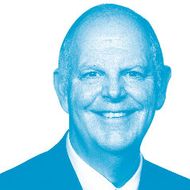
Tom O’Halleran
Age: 71
The district poses two major hurdles for any Republican challenger: its massive size (bigger than Illinois), and the largest Native American population of any district, a demographic that skews Democratic. But local Republicans are rallying around Carlyle Begay, a Navajo Nation member and Trump’s adviser on Indian Affairs, who could sway voters in a district that has gone Republican in the last five presidential elections.
FL-7th District (D)

Stephanie Murphy
Age: 38
Compelled to join the 2016 race after the Pulse shooting just south of the district, Murphy ousted 12-term incumbent John Mica. A “blue dog” Dem, she has been a staunch advocate for gun control, supported a balanced-budget amendment, and proposed legislation to keep Steve Bannon off the National Security Council. But expected NRA money in the GOP candidate’s war chest will likely help rally the Republican voter base.
CA-24th District (D)

Salud Carbajal
Age: 52
Carbajal won his first term last fall in a tough race to fill the seat vacated by nine-term Democrat Lois Capps. After a crowded primary, Carbajal faced off against Republican Justin Fareed, a 28-year-old former House staffer (and former UCLA football player). For a time, the race was one of the most expensive in the country, with outside spending approaching $3.7 million. Despite more experience and name recognition, Carbajal barely won and had to spend a lot to do it.
NJ-5th District (D)

Josh Gottheimer
Age: 42
This North Jersey district hadn’t been held by a Dem in more than 30 years when Gottheimer eked out a victory last fall. The race against seven-term incumbent Scott Garrett shattered expenditure records and got personal (Garrett dug up assault allegations against Gottheimer; Gottheimer seized on anti-gay comments Garrett had reportedly made). Trump took the district, and a low-turnout midterm could flip it.
CA-7th District (D)
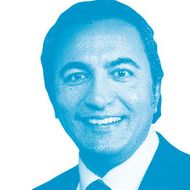
Ami Bera
Age: 52
During his 2016 reelection campaign, it came out that Bera’s father had illegally funneled money to his first two campaigns. (In August, Babulal Bera was sentenced to a year in prison.) Clinton won the district, but given Bera’s tarnished reputation and the antipathy from his own ranks (the state party hesitated to endorse him in 2016), some strategists think he could be toppled by a political newcomer without as much baggage.
IA-2nd District (D)

David Loebsack
Age: 64
In January, as Loebsack began his sixth congressional term, he was the most prominent Democrat left in a state that is utterly dominated by the GOP, and the NRCC quickly announced that Loebsack would be one of its top targets for the 2018 cycle. But he also bested Clinton’s total in his district by nine percentage points, dramatically outperforming her in several of the rural counties that surround his reliably liberal home base of Iowa City.
*This article appears in the April 3, 2017, issue of New York Magazine.


